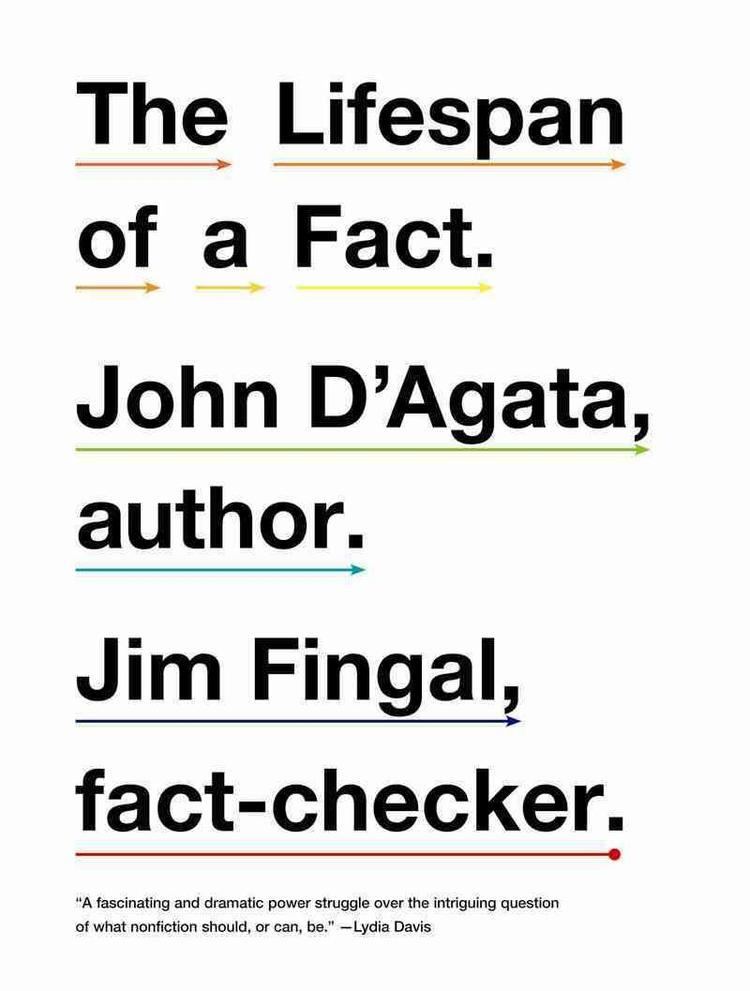7.6 /10 1 Votes7.6
Originally published 2012 | 3.8/5 Goodreads | |||||||||||||||||||||||||||||||||
 | ||||||||||||||||||||||||||||||||||
Similar About a Mountain, The Lost Origins of the Essay, The Next American Essay, Halls of Fame: Essays, The Making of the Ameri | ||||||||||||||||||||||||||||||||||
The Lifespan of a Fact is a book co-written by John D'Agata and Jim Fingal and published by W.W. Norton & Company in 2012. The book is written in a non-traditional format consisting of D’Agata’s 2003 essay “What Happens There” in black text centered on each page with Fingal’s black and red comments (and occasional correspondence with D’Agata) making up two columns that surround and note certain portions of the essay.
Contents
Readers follow not only the essay as originally written in 2003 by D’Agata, but also the fact checking process in which Fingal and D’Agata engage during the seven-year gap between the original submission of the essay to Harper’s Magazine, and the resubmission to The Believer in January 2010. As D’Agata and Fingal discuss the various inaccuracies of the original text, the discourse leads to explorations in the importance of narrative flow in non-fiction and the role of fact checking when creatively writing about true events.
Content of “What Happens There”
D’Agata’s 2003 essay “What Happens There” examines the culture of suicide in Las Vegas, Nevada following the 2002 death of sixteen year old Levi Presley. Presley, having committed suicide by jumping off of the Stratosphere Hotel, becomes the core of D’Agata’s exploration of Las Vegas’ tourist-centered culture. D’Agata relates stories from his personal research, including interviews and observations, to highlight Vegas’ historical attitudes towards traditionally high suicide rates. This essay, commissioned originally by Harper’s Magazine was pulled and the edited version (fact-checked by Jim Fingal) was re-published in January 2010 in The Believer.
Creation of The Lifespan of a Fact
D’Agata’s essay was commissioned in 2003 by Harper’s Magazine but later pulled from publication after editors became aware of several factual errors. D’Agata then sold the essay to The Believer magazine. It was at this time that Jim Fingal (a recent Harvard graduate who majored in English) was assigned to fact-check D’Agata’s work. Over a seven-year span of written correspondence, D’Agata and Fingal discussed intentional and unintentional use of inaccuracies in the creation of “What Happens There.” This discussion, recorded in The Lifespan of a Fact, often includes personal opinions from both authors about the importance of specific facts versus the importance of creative license in non-fiction. The final compilation of essay and comments was edited by Jill Bialosky and published by W.W. Norton & Company in 2012.
Reception
The Lifespan of a Fact has received praise from multiple publications including NPR, The New York Times, and Slate which voted it one of the “Top 10 most crucial books” reviewed in 2012.
